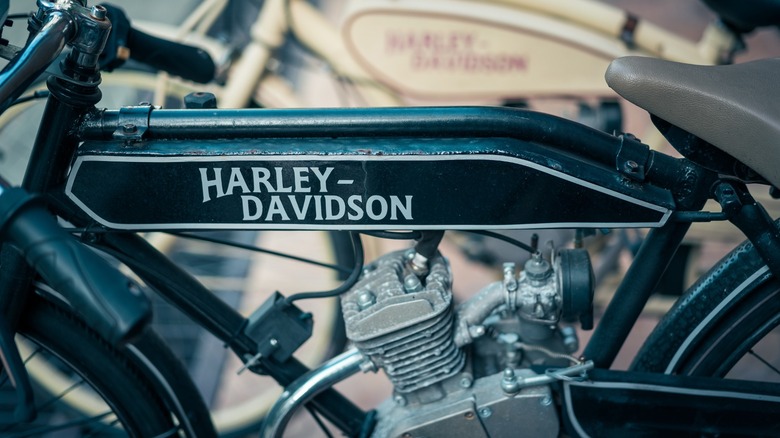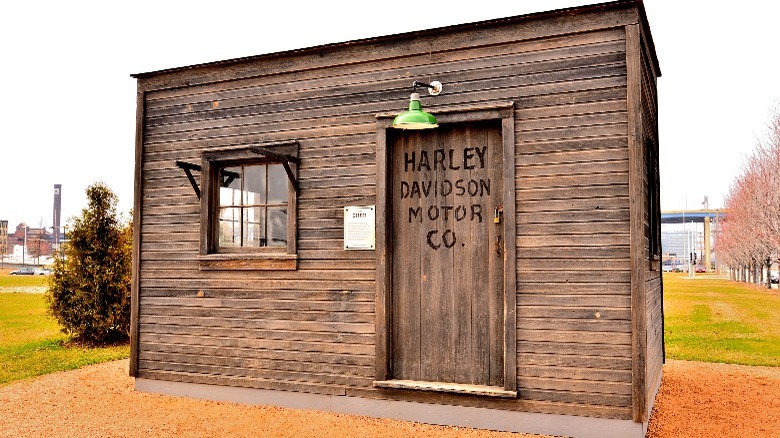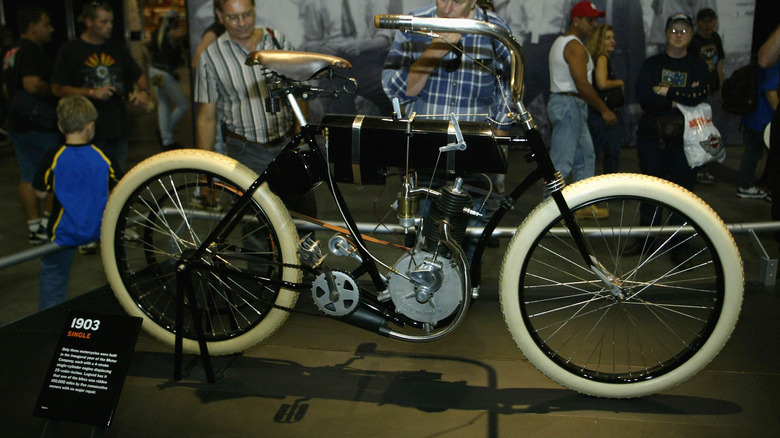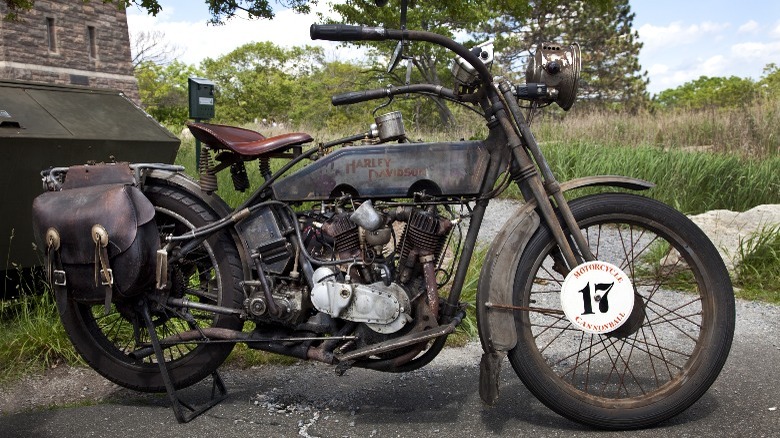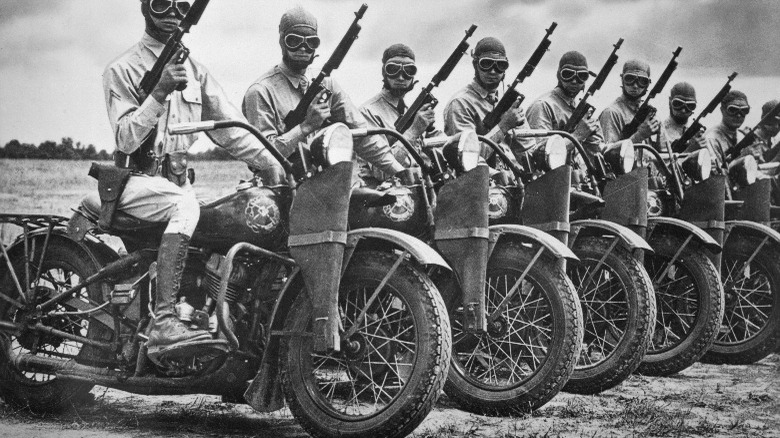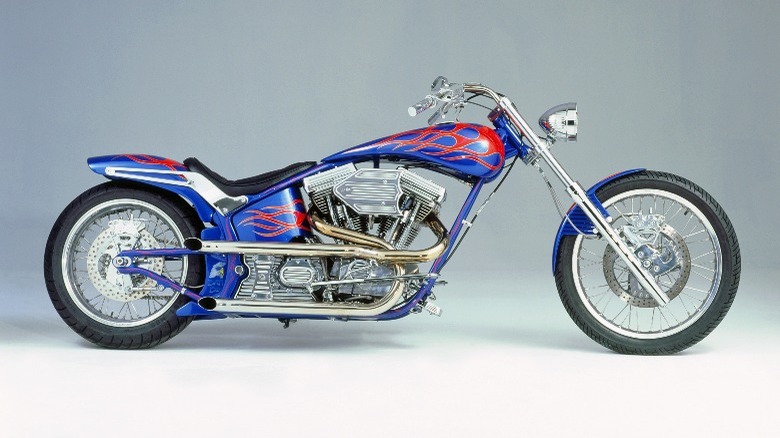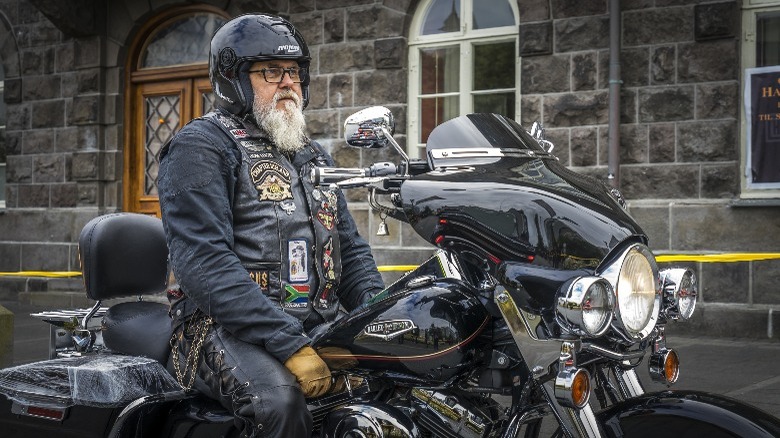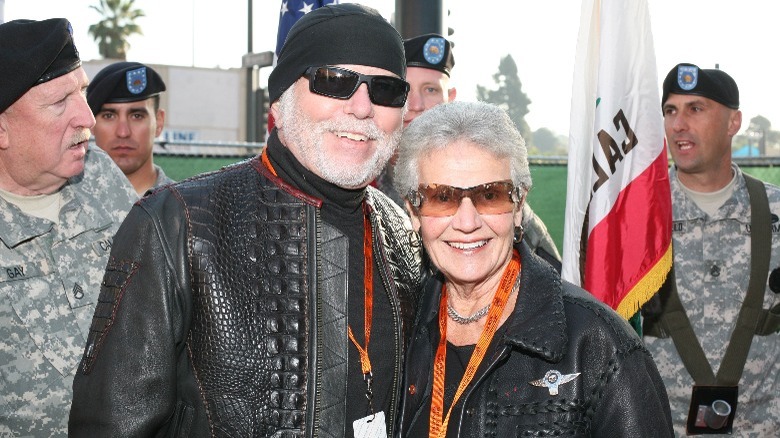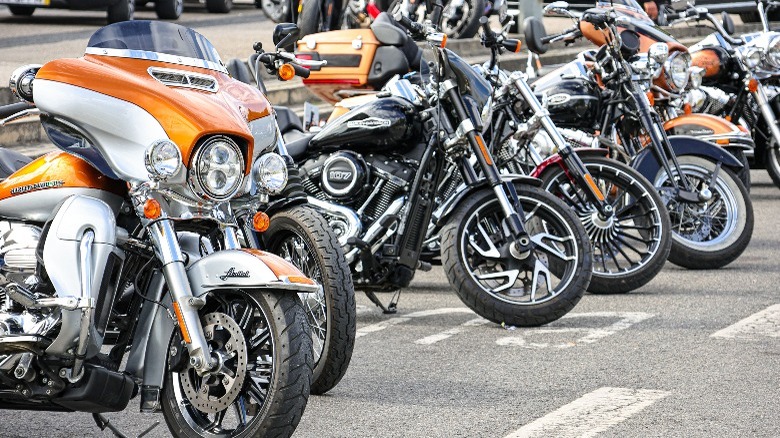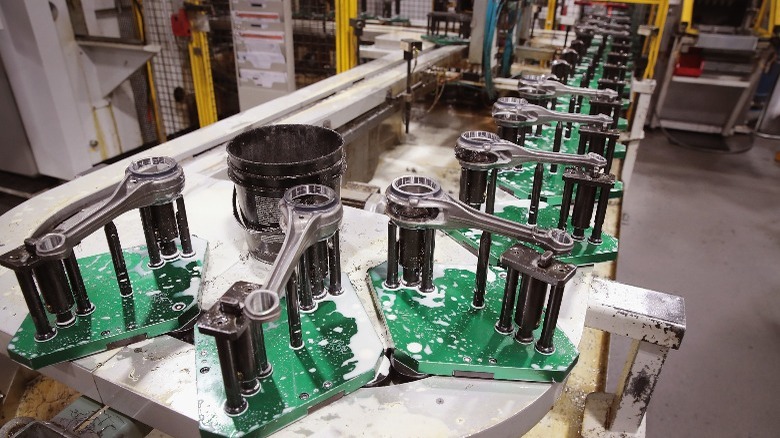Important Moments In The History Of The Harley-Davidson
Perhaps no company is more synonymous with motorcycles than Harley-Davidson. Amongst other factors, the 120-year-old American motorcycle manufacturer has become a household name thanks to its exceptional reliability and quality. Harley-Davidson has catered to every motorcycle need, from the hardcore motorcycle enthusiast to the more casual bikers.
Nevertheless, this century-old company, has had its fair share of ups and downs. Since announcing its first motorcycle in 1903, Harley-Davidson has survived through the ages including the Great Depression, and has come out thriving thanks to its ability to adapt to global evolution and meet the unique demands of whatever time they find themselves in. Today, Harley-Davidson and Indian Motorcyles are the oldest motorcycle manufacturers in the United States still operational.
Put your helmets on, strap in, and take a ride with us down the highways of history as we cover some of the most important moments in the history of one of the world's oldest motorcycle manufacturer, Harley-Davidson.
William Harley designs his first motorcycle in 1901
Harley-Davidson was born in 1903 when William Harley and Arthur Davidson created their first motorcycle in their friend Henry Melk's shed in Milwaukee, Wisconsin. William and Arthur had met a decade ago in the 1890s and formed a bond over their love of mechanics and design.
Harley designed his first motorcycle engine in 1901 and started working on the project with Davidson and his brothers, William and Walter, thereafter. The project was completed in 1903 with its product being the inaugural Harley-Davidson motorcycle known as Serial No.1. This was a regular pedal bicycle frame with a small internal combustion engine that had a displacement of 7.07 cubic inches.
The Serial No. 1 was not perfect, with the creators realizing upon testing that it could not climb hills. As such, it was back to the drawing board and they began to work on a new model shortly afterward.
Harley-Davidson reveals the Model 1
By 1904, the business partners doubled the size of that factory before building its first official motorcycle. The Model 1, as it was called, featured a 24.74 cubic inch inlet-over-exhaust single-cylinder engine mounted to a custom-built 185-pound.
This new and bigger design elevated from being a motorized bicycle to being a motorcycle. Though the model faced challenges, it was entered into a race at Wisconsin State Fair Park, where it finished fourth. The race marked the first official appearance of a Harley motorcycle.
On September 17, 1907, Harley-Davidson was officially incorporated as the Harley-Davidson Motor Company. The company grew quickly after expanding its factory in 1906, as it saw production rise from 50 machines that year to 450 in 1908.
By 1909, Harley-Davidson introduced its first V-twin engine. The engine was a failure, but an improved and successful F-Head version was introduced in 1911, causing demand to go up again. This meant there was a further need to expand, and with the help of a $170 loan from James McLay, an uncle of the Davidson brothers, they were able to purchase a parcel of land.
By 1913, they had established a state-of-the-art six-floor brick factory that was to aid them in meeting their ever-increasing demand.
The U.S. Government buys 20,000 motorcycles for WWI
World War 1 brought significant demand to Harley-Davidson. For the first time, the government decided to use motorcycles as part of the war effort, purchasing 20,000 models from Harley-Davidson.
Harley-Davidson used its J series as the base for the 20,000 models it supplied. The J series had a 61 cubic inch F-head motor that produced up to 15 horsepower and had a three-speed hand shift transmission with a front suspension frame.
Harley-Davidson motorcycle fleets were reportedly deployed in the Mexican deserts by General John Pershing in the pursuit of Pancho Villa during the Mexican Revolution. Roy Holtz, who was a corporal in the U.S. Army and is credited with being the first American to enter Germany after the war, did so on a Harley-Davidson motorcycle.
The military use of Harley-Davidson motorcycles solidified the company's reputation for building reliable bikes. It also marked the beginning of its strong association with the U.S. military, particularly through the provision of training schools for military mechanics, some of which still exist today.
Harley-Davidson produces 60,000 motorcycles for WWII
Surviving the Great Depression, Harley-Davidson once again experienced significant demand from the U.S. government as World War 2 kicked off. During this period, Harley-Davidson would produce 60,000 bikes for the US government making it the main supplier of motorcycles to the U.S. military during World War 2.
For this project, the company produced the WLA and XA models. The WLA model had a flathead 45-inch V-twin engine with up to 23.5 horsepower and a top speed of 65 mph. Today, the WLA motorcycles are on display at MacArthur Memorial Visitors Center in acknowledgment of its contributions to the American triumph in the war.
The XA model, meanwhile, was produced in limited quantities and never saw battle action overseas. It was intended for desert use and featured a horizontally opposed twin and foot-shift transmission with a hand clutch. The company built the XA bikes as a counter to the BMW motorcycles being used by the German forces.
The birth of the chopper
Following World War II, Harley-Davidson experienced another boom period as many veterans were drawn to motorcycles, having ridden them during the war. The company introduced the Panhead engine in 1948 and the Hydra-Glide in 1949, which nicely set up the '50s boom.
The Panhead replaced the Knucklehead. It was a V twin engine that generated up to 55 horsepower and had a top speed of about 100 mph. It also incorporated large aluminum cylinder heads that reduced the risk of overheating and allowed riders longer riding times. The Hydra Glide was named after the introduction of the Hydra Glide front forks, which bolstered rider comfort. The Hydra Glide is, even today, a sought-after motorcycle with the company, introducing a 2024 revival model in commemoration of its 75th anniversary.
Returning war veterans and other biking enthusiasts started to "chop up" their bikes with their engineering experience and this gave birth to choppers. Choppers were an expression of a rider's identity and craftsmanship. Choppers were stripped-down motorcycles with extended front forks and Harley's powerful engine at their core. They embraced the image of the rugged, all-American, rebellious outsider which was amplified by media portrayals and has become an integral part of the Harley-Davidson brand.
Americans Machines and Foundry Company acquires Harley-Davidson
In 1969, the company, after experiencing another rough patch, decided to merge with American Machine and Foundry (AMF). They also cut the workforce and took other major executive decisions to keep the company afloat. AMF took over the production of Harley-Davidson motorcycles, and though this helped the company financially, there was an evident dip in the quality of the products.
The AMF was reputed for producing sporting goods such as tennis rackets, golf carts, and bowling equipment, so adding motorcycles to their production line proved to be too big of a leap. Riders particularly shunned AMF-era Harley due to fears over the reliability of the workmanship. Even today, one will struggle to see an AMF-era Harley-Davidson on the roads cause the demand was so low at the time. Some of the AMF Harley-Davidson motorcycles include the SX-250, the 1200cc Super Glide FX, and the X-90 Shortster Minibike.
After a dozen years, Harley-Davidson executives, including Vaughn Beals and Willie G. Davidson, bought back the company from the AMF in 1981 in order to restore their reputable product quality as well as provide competition for the increasingly popular Japanese motorcycle manufacturing brands such as Yamaha and Honda.
Harley-Davidson sold to Willie G. Davidson and other investors
The company is purchased once more by a set of investors, one of whom includes Willie G. Davidson, grandson of William A. Davidson. Once they got control back in the early 1980s, it wasn't immediately back to business as usual for the company. The company faced fierce competition from the Japanese brands and needed the support of the Reagan administration to deal with them. Ronald Reagan ordered massive tariffs to be placed on the Japanese manufacturers in a patriotic move to help the company, being the last surviving maker of American-made motorcycles.
In 1983, Harley-Davidson launched the Harley Owners Group (HOG), a factory-sponsored motorcycle club, to create and develop a community among Harley-Davidson owners in order to build brand loyalty. It followed this, with the introduction of its Evolution engine, which was a 1340cc engine credited with restoring its reputation and saving the company from going under.
The 1990s were marked by the introduction of the iconic Harley-Davidson Fatboy model. The Fatboy is regarded as one of the greatest and most popular motorcycles ever produced, and it's still being produced today. The company also revamped its Softail line, achieving financial security that allowed it to open the York facility in Pennsylvania and expand into European and Asian markets.
The company ended the century on a massive high with its 95th-anniversary celebration attracting over 135,000 motorcyclists in Milwaukee, Wisconsin, evidencing its global fan base and brand loyalty.
Demand Drops For Harley-Davidson Motorcycles
After continuing stable development at the start of the 21st century, the company faced another downtime during the Great Recession. The Great Recession of 2008 saw global economic decline, which led to a major decrease in the demand for Harley-Davidson motorcycles due to the cost. The company lost about $55 million in 2009 and this led to some changes.
The first key change was a drastic reduction in the workforce. In 2009, Harley-Davidson announced significant layoffs, cutting around 1,100 jobs which was about 12% of its workforce. They also temporarily closed the York plant in order to consolidate operations at one factory and cut costs. Furthermore, in 2009, then-CEO Jim Ziemer retired and was replaced by Keith Wandell.
The company which survived the Great Depression also managed to survive the Great Recession. In 2010, they introduced new models like the Street series, which were smaller and more affordable.
Harley-Davidson Reveals Plans To Move Manufacturing Abroad
Today, Harley-Davidson remains one of the most recognizable motorcycle brands in the world. It is led by CEO and President, Jochen Zeitz who has been instrumental in leading them through some policy disputes both at home and abroad. It most recently overcame a U.S. consumer class action lawsuit on warranty restrictions.
In 2018, the company announced it would be moving some of its production abroad amidst a dispute with the European Union over tariffs that were seen as retaliation for those imposed by the U.S. government on foreign manufacturers dating back to the Reagan administration. Today, they have two factories abroad: One in Manaus, Brazil, and the other in Rayong, Thailand. There are further plans to expand its production abroad next year.
In 2019, the company made headlines with the release of the LiveWire, its first fully electric motorcycle. In 2021, Harley-Davidson established LiveWire as its own brand to focus entirely on electric motorcycles allowing it to cater to a growing market of environmentally conscious riders and position itself as a leader in the electric motor industry.
The generational transition means it is experiencing a decline in sales as the younger generation is not as interested in motorcycles as their parents and grandparents before them. In spite of this, the company continues to improve its production line by introducing new technologies and innovative models. Its 2024 lineup includes a range of 24 models, including multiple models in the Grand American Touring, Cruiser, Trike, and Sports class.
